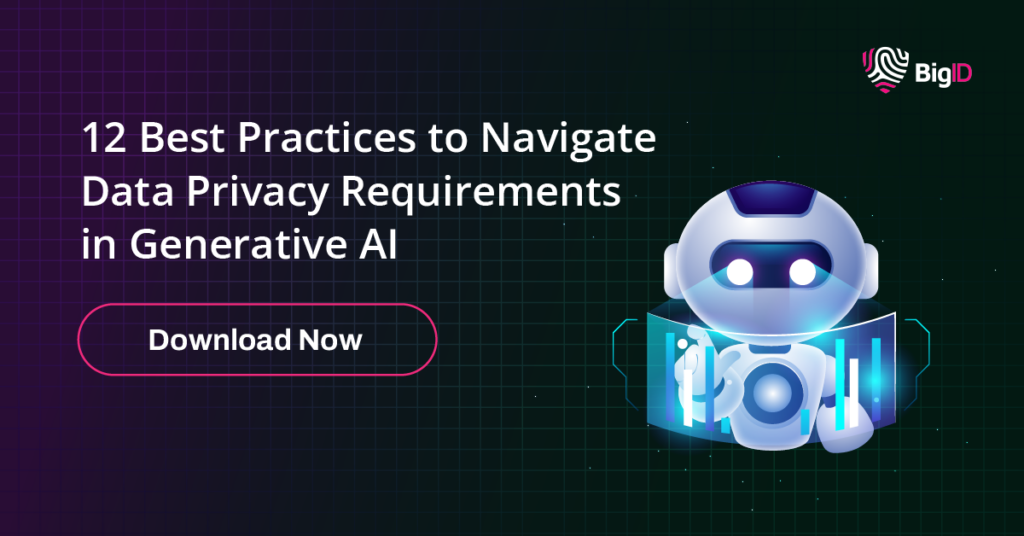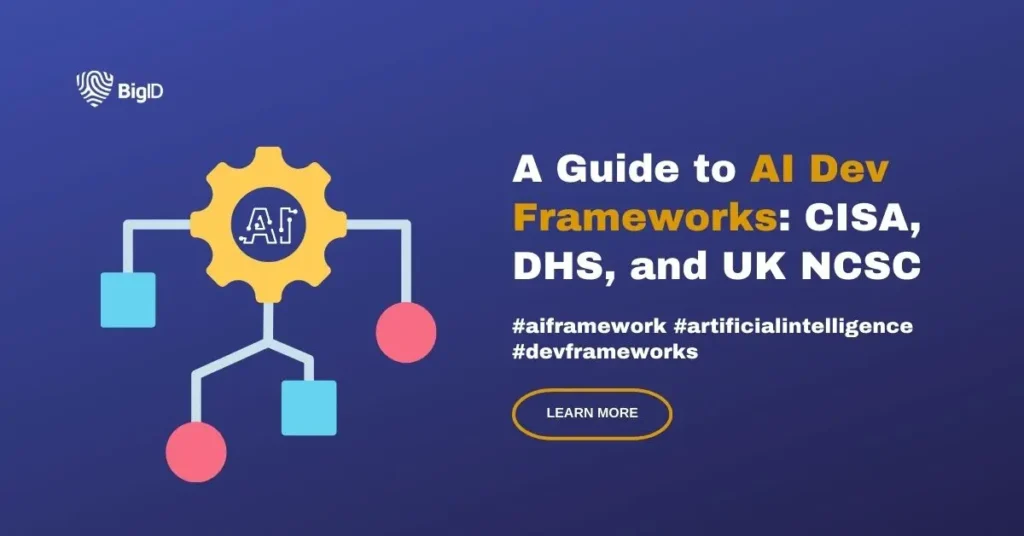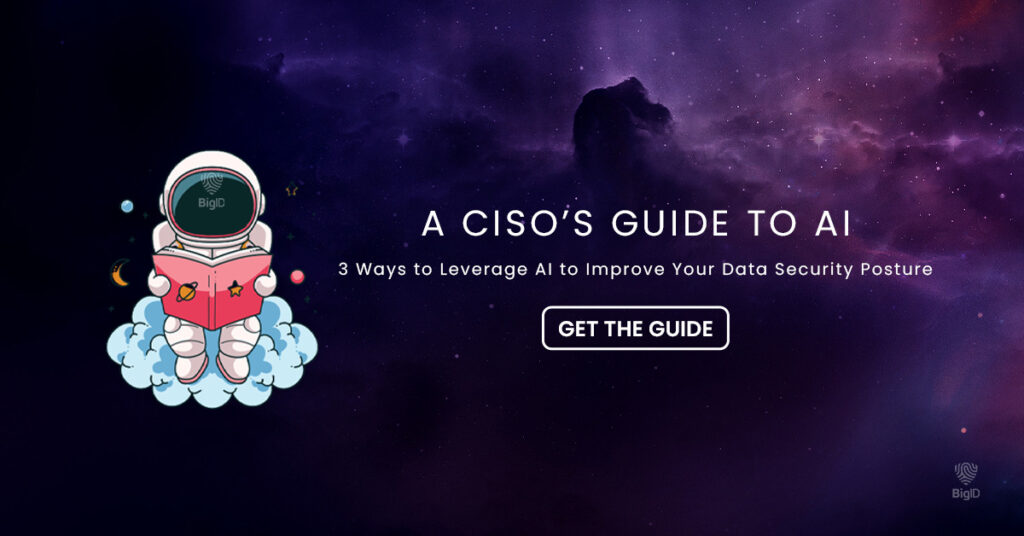AI Framework Development: Artificial Intelligence Risk Management
Global agencies and governments made history by agreeing on instructions for Artificial intelligence development and deployment with secure-by-design principles for the first time. On November 26th, 2023, the U.S. Department of Homeland Security’s (DHS) Cybersecurity and Infrastructure Security Agency (CISA) and the United Kingdom’s National Cyber Security Centre (NCSC), in collaboration with 21 other global agencies, released Guidelines for Secure AI System Development, which will help developers incorporate cybersecurity decisions into every stage of the development process.
These guidelines govern all systems developed with artificial intelligence or an AI framework.
But, what’s an AI framework?
What is an AI Framework?
AI frameworks and libraries are collections of pre-built code and tools that simplify the creation of AI applications. They allow developers to focus on customizing solutions for their specific needs rather than starting from scratch.
These frameworks are crucial for implementing complex machine learning (ML) and deep learning algorithms, including the development of neural networks, which are pivotal in tasks like image recognition and natural language processing.
Specifically, deep learning frameworks provide the infrastructure for training deep neural networks with multiple layers and enable the software to learn and make decisions the way humans would.
On the other hand, machine learning frameworks offer essential algorithms and techniques for a range of applications from classification to recommendation systems, making the development process more efficient.
With these advanced tools, your developers can significantly reduce the time, money, and resources required to develop AI software.
The Benefits of Using AI Frameworks
Cost Efficiency
As we mentioned earlier, frameworks come with some pre-built code and other tools that facilitate your artificial intelligence projects. As a result, you don’t need to invest as much time or manpower in developing your application. By using a framework, you build AI applications faster. Your developers don’t need to write as much code from scratch, and you get more sophisticated results more efficiently.
Application Development Streamlining
AI frameworks provide you with algorithms, data handling utilities, and optimization techniques. These elements are pre-implemented and ready to use, which helps streamline the development process. As a result, your developers can concentrate on solving the specific challenges or tasks at hand rather than getting bogged down by the complexities of AI and ML algorithms implementation.
Time-Saving
AI frameworks provide a comprehensive development environment, complete with tools for debugging, testing, and data visualization. This infrastructure simplifies and accelerates the entire development process from creation to deployment, saving developers time. They can select and customize these models for their specific projects instead of building them from the ground up.
Why Are AI Framework Development Guidelines Important?
AI is developing rapidly, and without proper oversight, there are substantial risks to public safety. The guidelines are essential steps toward addressing cybersecurity within its development worldwide.
These guidelines come on the heels of the U.S. issuing an AI Executive Order that supports safe and secure AI technology development and deployment. In October, President Joe Biden issued an executive order directing the DHS to promote adopting AI security and safety standards globally. With such a short turnaround, the DHS’s quick collaboration only highlights the importance of mitigating the risk of AI to ensure artificial intelligence systems are safe, secure, and trusted.
Key Focus of the Development Guidelines for Artificial Intelligence
The guidelines have four key areas of focus for the artificial intelligence development process:
- Secure design
- Secure development
- Secure deployment
- Secure operation and maintenance
Each section highlights ways to reduce cybersecurity risk and implement secure-by-design principles when developing AI, which CISA highly recommends.
Secure design
This phase encourages developers to think about security considerations from the beginning of the development process — also called “secure by design”.
This is the stage where you’d conduct risk assessments and threat modeling to identify potential threats and vulnerabilities. These weaknesses would determine the types of attacks your application might face and how you can mitigate them. You would also consider security features that can be embedded into the design at this stage.
Secure development
An application with bugs in its code and flaws in its logic can be a security risk. You need to write and test your code securely to minimize these risks. That means you need to vet all third-party libraries, frameworks, and services. You must also have comprehensive documentation of the development process and manage your technical debt.
Secure deployment
Safeguard the hardware and software environments when you’re ready to deploy your application. These environments would include servers, databases, and networks. Secure deployment guidelines include protecting infrastructure and models from compromise, threat, or loss; developing incident management processes, and responsible release.
Secure operation and maintenance
Once the application’s deployed, you’ll need to monitor your system to respond to security threats in real time, and perform regular updates to patch any vulnerabilities that arise. You should also share information about recent threats and security best practices with your organization and business partners.
Popular Commercial and Open-Source AI Development Frameworks
Selecting the right framework can be crucial for the development of artificial intelligence applications. From Python libraries to comprehensive AI tools, you have a range of options to choose from.
Here are some of the most popular frameworks and libraries that you can use to train and deploy AI applications:
PyTorch
PyTorch is a tool built using Torch, an open-source machine learning library. It’s excellent for both academic research and industrial applications. The tool is known for the way it accelerates the transition from research prototypes to production deployments.
Scikit-Learn
Scikit-Learn is an open-source framework known for its simplicity. It offers comprehensive machine learning tools that make it the ideal starting point for beginners who want to dive into AI and machine learning with Python.
TensorFlow
Google’s TensorFlow comes with extensive artificial intelligence tools for training and deploying models across various platforms. It’s versatile and scalable, making it a top choice among developers for creating sophisticated applications.
Keras
Keras offers an API that operates on top of TensorFlow and other frameworks. It’s known for its ease of use and fast experimentation. The framework allows developers to build and test deep learning models efficiently, streamlining the path from idea to outcome.
LongChain
LongChain pushes the envelope in generative AI. It provides advanced tools that tackle complex language understanding tasks.
Hugging Face
Hugging Face has done wonders for natural language processing with its Transformers library, which makes state-of-the-art NLP accessible to the wider AI community. It focuses on user-friendly tools for language-based innovations.
OpenNN
OpenNN specializes in neural networks. It comes with a high-performance framework for developers focusing on data analytics and machine learning. The framework is designed for those seeking efficiency and precision in their models.
OpenAI
OpenAI is well-known for its GPT models. It leads in AI innovation, offering powerful and responsible AI tools. The tool democratizes access to advanced technologies and fosters widespread application and research of AI.
PyBrain
PyBrain provides a straightforward entry into artificial intelligence development, focusing on ease of use for educational purposes and rapid prototyping. It’s tailored for newcomers and researchers exploring foundational AI concepts.
IBM Watson
IBM Watson delivers enterprise-level AI solutions, combining robust AI frameworks with IBM’s expertise. It caters to businesses seeking reliable, scalable, and powerful AI applications.
Microsoft Cognitive Toolkit (CNTK)
Microsoft’s CNTK optimizes performance for deep learning applications, particularly on multi-GPU systems. That makes it suitable for both research and enterprise AI projects.
DL4J (Deeplearning4j)
DL4J brings deep learning to the Java ecosystem. It offers a comprehensive platform that helps you develop, train, and deploy artificial intelligence models in enterprise environments.
Theano
Though no longer in active development, Theano laid the groundwork for modern AI, providing a powerful library for efficient numerical computation.
MXNet
MXNet excels in scalability and efficiency, supported by a vibrant community. It’s a choice framework for developers needing high-performance, cross-platform AI solutions.
Caffe
Caffe specializes in speed and modularity for computer vision applications. It facilitates fast network experimentation and data processing.
XGBoost
XGBoost shines in handling structured data for machine learning, known for its efficiency and performance in competitive machine learning scenarios.
Each framework offers unique capabilities, catering to various aspects of AI development, from neural networks and deep learning to natural language processing and computer vision, guiding developers in selecting the proper tools for their AI projects.

How BigID Helps Adopt AI, Reduce Risk, and Secure AI Development
BigID implements advanced AI and machine learning to scan, identify, and classify sensitive data to provide insights to enhance security and reduce the risk of breaches and vulnerabilities.
The secure-by-design approach is woven into our DNA. We enable your business to incorporate security throughout the development lifecycle, so you comply with the guidelines for Secure AI System Development.
Additionally, organizations trying to innovate with AI technologies must adopt them safely and responsibly. With BigID, it’s easy to validate that AI models are trained on the correct data. We help you inventory, catalog, and label data based on context, sensitivity, residency, type, category, usage, and more.
Our technology can also help you identify, manage, and monitor potential risks: Any sensitive or regulated data is immediately and automatically flagged.
Choosing AI Framework That Fits Your Business With BigID
BigID’s comprehensive platform provides a holistic solution for AI governance and data lifecycle management.
It gives you the insights needed to comply with AI-specific requirements and guidelines, and the tools to manage, protect, and govern AI with robust security protocols that enable zero trust.
Mitigate insider risk, and secure structured and unstructured data across the entire data landscape. Take the strategic approach with BigID for regulatory compliance, cost savings, customer trust, and privacy/security culture.


